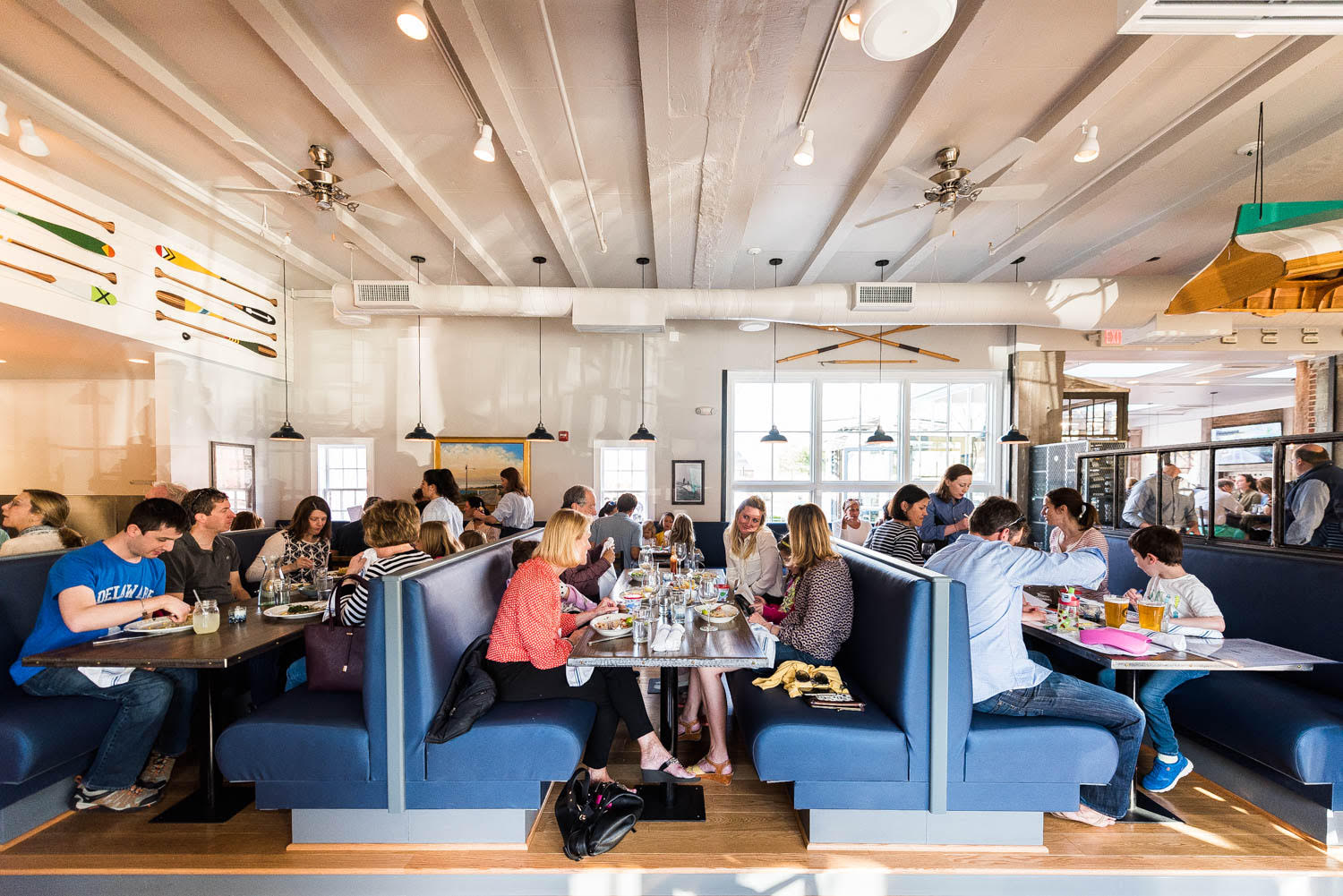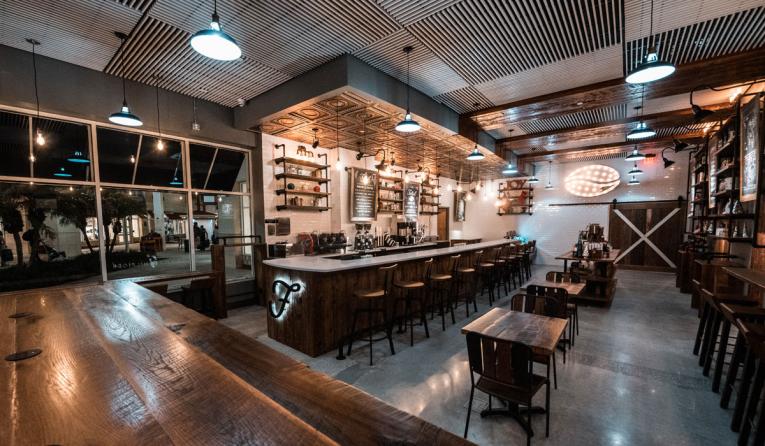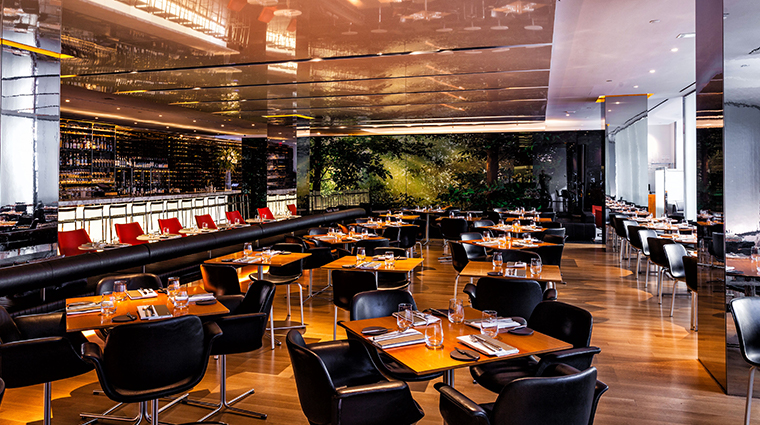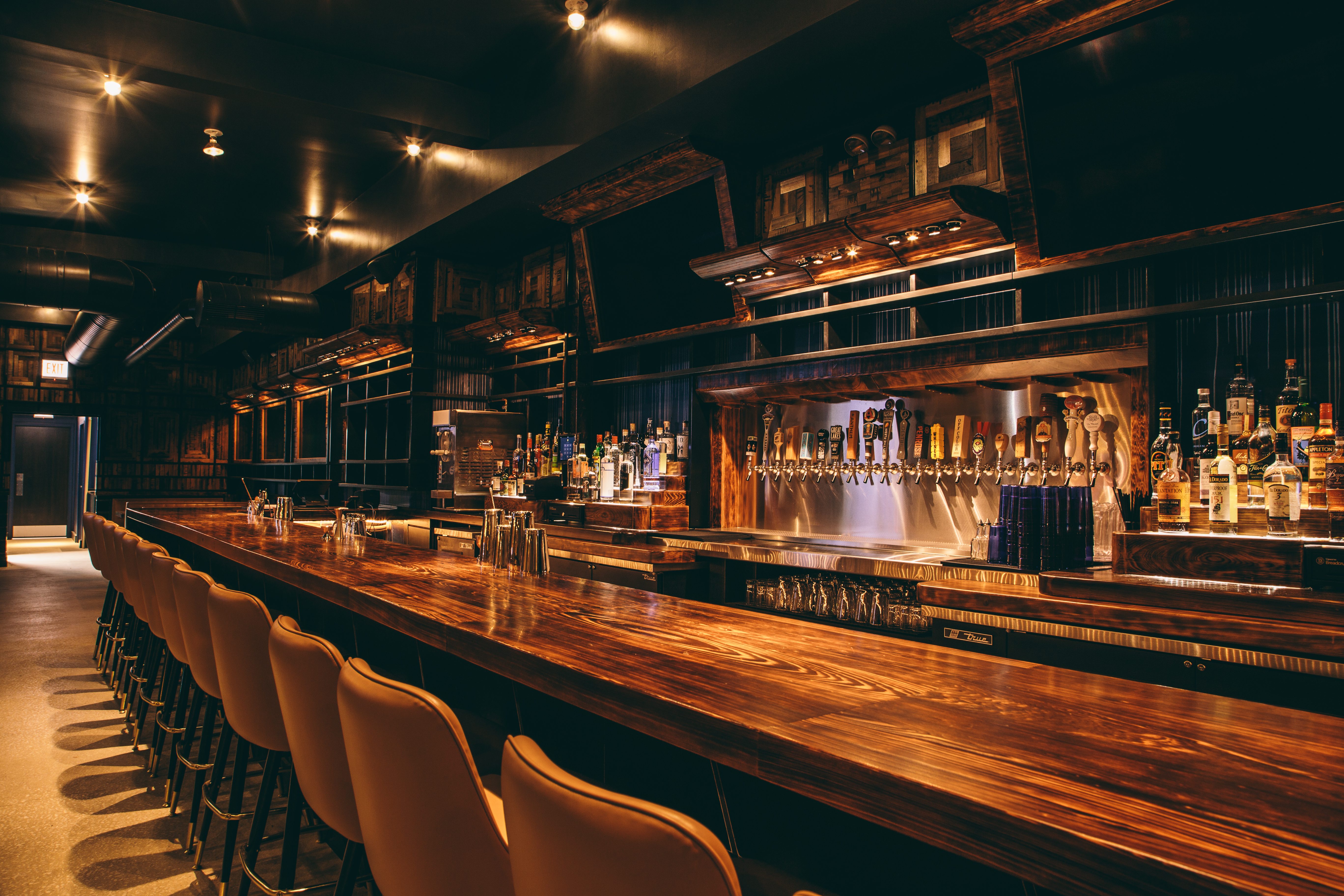Share
- Jump to:
Picture this: you head to a restaurant called Bistro D’Argent. You’re expecting dim lighting, a robust wine list, plush booths, and a killer French onion soup. But when you get there, it turns out they actually serve diner food in a space filled with wicker furniture. And they’re playing a 90’s hip hop playlist. And it’s counter service.
This is a restaurant that hasn’t thought through its concept. A restaurant concept is the overall theme of a food service establishment – it’s the elevator pitch. The concept will be the driving factor behind all subsequent decisions in building a unique restaurant including decor, service-style, hours of operation, menu items, music and more.
When determining the concept, you may pull from personal experience in work or leisure like from travels, traditions passed down in your family, or a specific culture you have a spot in your heart for. You may also pull from the wants or needs of the general population in your area and your target customers, local or seasonal produce and specialties, a specific time period, or even a historical figure. There are truly hundreds of ways you can pin down a concept. Distilling your influences into a cohesive concept is so important for creating a new restaurant that guests find approachable and enjoyable. It becomes a way to distinguish your restaurant from competitors and let guests know what they can expect from their dining experience.

Source: Eater DC. Millie’s is a family-friendly restaurant with a laid-back, nautical concept inspired by vacations on Nantucket add to the fun vibe.
The Aspects of Restaurant Concepts
There are many aspects that can factor into your overall concept. It’s important for a restaurant owner to make sure they all fit together and is cohesive. It also needs to make sense within the general business plan. Let’s look at all the things that go into a restaurant concept below.
Restaurant name.
The restaurant’s name is likely to be most guests’ first introduction to the concept. Consider the expectations implicated by terms like diner, gastropub or osteria in terms of menu, vibe and service-style. Additionally, a restaurant inspired by a historical figure or the food of a particular culture would likely want to include that in the name in some way. Finally, consider the personality you want your restaurant to imbue. A fun-loving and playful place may have a name with a rhyme or a pun while a formal tasting menu gunning for a Michelin star may choose a name that implies luxury.
Menu writing.
Here’s where your concept comes to life. The food is probably the most impactful expression of your concept and most powerful for word-of-mouth. Do you want to focus on one dish done very well or in creative variations? Are you showcasing the food of a particular country or culture? Is this restaurant to showcase a fine dining chef at his very finest? Once your food is figured out, the concept extends to your menu in font, paper-type (or QR code for a virtual menu!) and phrasing.
Service styles.
Falling short of expectations in service is the number one way to lose a potential regular guest. Understanding what the assumed service-style might be for the concept you choose and ensuring guests are aware of any surprises is among the best strategies for a successful business. Some potential service styles include:
Virtual Restaurants.
Also known as ghost kitchens or cloud kitchens, virtual restaurants have no brick-and-mortar presence and offer off-premise only. This is a great way to utilize a limited space and requires a much smaller labor budget due to the lack of service staff. The challenge with a virtual restaurant is in creating the sense of hospitality, personality and rapport with guests that could otherwise be built on site.
Fine Dining.
Generally conjuring the image of white tablecloths and servers in suits, fine dining now encompasses a wider range of restaurants. To qualify as fine dining, you need elevated service, refined decor, elegant food, which can be small plates, standard-sized appetizers and entrees, or a prix fixe menu with wine pairings. This should be a place that screams “let’s celebrate!”.
Mid-Scale Dining.
Mid-scale dining can still be full-service restaurants, but it brings the formality down a couple of notches. This would be a great setting for a family dinner or friendly get-together. The menu could feature individual portions or family-style platters and would generally do well to have some kids’ options. Mid-scale restaurants could build a menu around regional specialties or choose a wide-ranging offering to appeal to larger crowds.
Fast Casual.
This is a booming sector of restaurants. This generally includes counter service with pre-prepared food that can be portioned and packaged in different ways and is often seen as a step up from fast food restaurant. You might run down a buffet-style line where you can build bowls, salads or sandwiches with premade proteins like grilled chicken or crispy tofu, veggies and toppings. This is a great service style for a business-heavy location, likely to do a lot of lunch service.
Coffee Shop.
A coffee shop style of restaurant basically always has a focus on their coffee menu first and foremost, but could certainly extend to teas, juices, and smoothies as well. A coffee shop menu will typically be limited, giving you the opportunity to perfect the few things on offer. As you can expect the daytime to be the busiest hours, you could look to make it a cross-functional space with a license to become a wine bar in the evening. There’s always the option to play into a gimmick such as a cat cafe or model after an eatery in pop culture.
Bar.
Much like a coffee shop, the focus at a bar is on the beverages. There is certainly space to become renowned for food as well, especially if you have something unique to offer. Within the bar category, there are still decisions to be made on concept, as this can range anywhere from a plush cocktail club with a dress code to a dive bar with $5 beer-shot combos, which can also help determine the menu items available.
Food Truck.
If you want to take it on the road, a food truck might be for you! Again, this would generally feature a streamlined menu as space is at a premium and quick service is expected. The major pro of a food truck is the ability to go where the business is, rather than be tied to one spot.
This list is just the tip of the iceberg! There are enough service styles to warrant a whole book, and we have more listed out here.

Source: Foxtail Coffee, an independent coffee chain with an inviting and comfortable concept.
Restaurant decor and ambiance.
You’ve got a name, a location, a staff, and a restaurant concept idea. The interior design and decor of your restaurant is the other major piece of the concept puzzle. Do you want your restaurant to feel like an extension of your living room, where guests can stay all day? Consider plush couches, natural light and Wi-Fi to encourage lounging. Are you promoting clean eating and local produce? Maybe a living wall will help tie your theme together. Is your restaurant a celebration of Thai street food? Look for photography of the famous Bangkok river market or use Thai textiles to upholster your furniture. Use the same thought process as you determine employee uniforms, dining room playlists, social media presence and signage outside the restaurant. All of this feeds into the overall vibe of your restaurant.

Source: Forbes Travel Guide. The Modern, a fine dining restaurant from acclaimed restauranteur Danny Meyer located in the Museum of Modern Art in New York City.
Tips for Choosing a Restaurant Concept
There are so many decisions to make when building our your restaurant – it’s hard to know where to start. Here are some of the top considerations to determine the concept to move forward with.
Identify what inspires you.
Why are you opening a restaurant? Are you inspired by trips to Italy where you ate the best pizza of your life? Is it your passion for vegetables that you want to showcase? Did you notice that there’s nowhere to get a creative cocktail within 50 miles of your community? Think about what drives you internally and use that excitement to determine your focus.
Define what makes your concept unique.
Why are YOU the right person to open THIS restaurant and provide a unique experience? Consider how your concept can help differentiate yourself from the competition, whether it's the vibe that sets you apart from other spots in town or the chef’s expertise on a certain dish.
Research your customer base.
Who’s dining with you? While a high-end tasting menu might be the direction you want to go, it may not be successful if your customer base is filled with young families seeking kid-friendly casual dining.
Limitations of your space.
You can rewrite the menu, retrain your staff and purchase new linens. Your physical space is one of the hardest things to change and can be useful as a driver for your concept decision. A tiny dining room could push you towards a fast-casual or ghost concept where most or all business is off-premise. A kitchen with only a couple of burners but plenty of deep fryers might be telling you to specialize in a handful of fried items with a huge variety of sauces to show off creativity.

Source: Eater Chicago. The Moonlighter, the Scofflaw Group’s new ultra-casual restaurant across the street from Scofflaw in Chicago.
Restaurant Concept Inspiration
Some of the best inspiration comes from experiencing what’s already out there! Here are some restaurants that have it in the bag with a concept.
Cava.
Cava is a fast-growing fast-casual restaurant chain, headquartered in Rockville, MD. They feature Greek flavors in build-your-own bowls, salads and sandwiches and have pivoted to packaged goods with their beloved Crazy Feta, tzatziki, and other dips.
Foxtail Coffee.
Foxtail Coffee was founded in Winter Park, FL in an old auto body warehouse. Foxtail differentiates itself as a coffee shop with a focus on roasting the beans, by selecting a space that can house a roasting facility as well as a cafe.
The Modern.
The Modern is a fine dining restaurant from acclaimed restauranteur Danny Meyer located in the Museum of Modern Art in New York City. The concept takes inspiration from the museum, featuring streamlined furniture, modern art and a tasting menu with upscale ingredients and experimental techniques.
Millie's.
A great example of a mid-scale restaurant in Washington DC, Millie’s is family-friendly to a tee. With a large patio and an even larger menu featuring both family-style and individual portions, there is something for everyone. Nautical decor and an ice cream window inspired by vacations on Nantucket add to the fun vibe.
Scofflaw.
Scofflaw in Chicago is a cocktail bar first and foremost. The lounge-style environment and creative drinks may be the major draw, but an upscale take on bar food really helps them stand out from the crowd.
In an industry that sees about 50% of new businesses close within the first year, an overarching concept may not seem crucial but can be the difference between success and failure. It will help determine how your guests perceive your restaurant, what type of marketing campaigns will be impactful and what press coverage you can aim for. A restaurant without a cohesive concept can leave diners feeling confused at best and reluctant to recommend or return at worst. Owning a restaurant requires grit and determination (not to mention, long hours, hard work and a big financial investment) so picking a concept that feeds your passion is the best fuel.